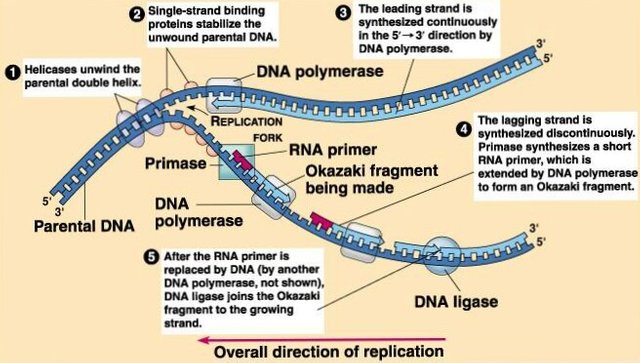Replication of DNA...
The process by which DNA is a duplicate or duplicate, or duplication, or duplication, by duplicating the two helms of a double helix.

The formation of DNA counterpart is the precursor of cell division. At the interfase level of mitotic cell division, the DNA molecules are usually copied. The process of duplication of DNA molecules is done in the following four steps.
i) First, the hydrogen bond between the double helix separates and the double helix unit becomes a helix.
ii) Each single helix is used as a template or mold for itself to make a more unique helix.

iii) DNA-polymerase creates supplemental single helix by adding enzyme, open nucleotide and open DNA. DNA-polymerase enzyme always adds nucleotide to the 3'-end of the growing new helix. So the new helix always has 5 '→ 3' direction. That means that the template is always 3 '→ 5'.
iv) Each new double helix created by the duplication is an old helix. The construction of a supplementary new helix with an old helixak is called semiconservative replication or semiconductor duplication.
The significance of DNA copulation in the biosphere is immense. DNA replication is essential for cell division and gamet creation. That is, DNA copulation is necessary for the growth and birth of the body and the transfer of characteristics from the ancestry to the descendants.
DNA এ সম্পর্কিত অনেক অনেক নতুন তথ্য জানতে পারলাম। খুব ভালো লাগলো বিস্তারিত জানতে পেরে।
আফরিন ভাই আমার পোস্টা পছন্দ করার জন্য ধন্যবাদ।